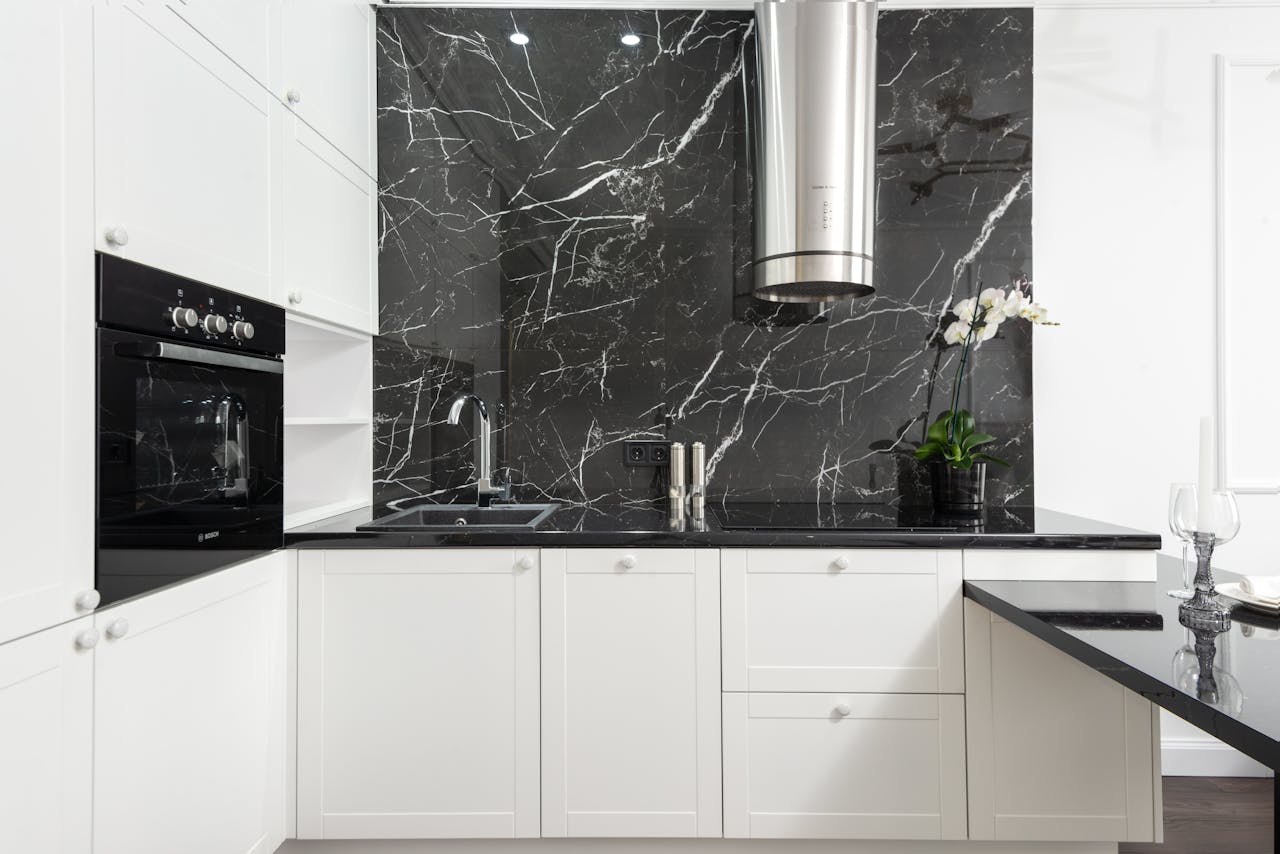The kitchen is undeniably the heart of any home. It’s the place where food is prepared, an area for family gatherings, and often, a space to express creativity. However, cooking inevitably results in the production of odors, smoke, and grease, which can linger and accumulate, causing discomfort and potential damage to your home. This is where the importance of a kitchen hood comes into play. Kitchen hoods, often referred to as extractor fans, ensure these byproducts are effectively eliminated from your cooking area. But how do you choose the right one for your kitchen’s size and layout? Let’s delve into the essential factors to consider.
Understanding the Role of CFM in Extractor Fans
When selecting a kitchen hood, one of the first things you should consider is the CFM (Cubic Feet per Minute) rating. The CFM measures the amount of air an extractor fan can move. It’s crucial to consider your kitchen’s size and the type of cooking you do when determining the right CFM for your needs.
Also to read : What is the impact of kitchen design on a house’s resale value in the UK?
A larger kitchen, or one where heavy cooking occurs, will require an extractor fan with a higher CFM. The rule of thumb is to have an extractor fan that provides 1 CFM for every cubic foot of space in your kitchen. However, if you frequently cook foods that produce a significant amount of smoke or odor, such as frying or grilling, you may want to opt for a higher CFM.
Additionally, the CFM of your extractor fan will influence the noise level in your kitchen. Higher CFM hoods usually produce more noise than their lower CFM counterparts. Therefore, if you’re particularly sensitive to noise, you might want to consider a lower CFM hood or one with sound insulation features.
Topic to read : How can you incorporate vintage elements into a modern kitchen design?
The Importance of Choosing the Right Size Extractor Fan
Size matters when it comes to your kitchen hood. The size of your extractor fan should correspond to the size of your cooktop. Ideally, the hood should be at least as wide as your cooktop and preferably, extend a few inches beyond it on either side. This is to ensure maximum efficiency in capturing and extracting the cooking byproducts.
If your hood is too small, it may not cover the entire cooktop, meaning it won’t be able to effectively capture and vent the smoke and odors produced during cooking. Conversely, if the hood is too large, it may not fit properly in your kitchen, causing aesthetic issues and possibly obstructing your cooking area.
Moreover, when considering the size of your hood, also think about the height at which it will be installed. Typically, range hoods should be installed between 24 to 30 inches above the cooktop. However, the specific installation height can vary depending on the hood model and manufacturer’s recommendations.
Considering the Different Types of Kitchen Hoods
Now that you understand the importance of CFM and size, let’s look at the different types of kitchen hoods. There are primarily two types of extractor fans: wall-mounted hoods and island hoods. The type you’ll choose will depend heavily on your kitchen’s layout.
Wall-mounted hoods are installed directly on the wall above your cooktop. They are suitable for kitchens where the cooktop is located against a wall. Wall hoods are an excellent option for smaller kitchens as they don’t take up much space.
On the other hand, island hoods are designed for cooktops that are located in the center of the kitchen, typically on an island. These hoods are typically larger and require more CFM than wall hoods due to the open layout of the cooking area. Therefore, if you have an open kitchen design with the cooktop on an island, an island hood will be the best choice.
Taking Ventilation into Account
Last but certainly not least, remember to consider the ventilation of your kitchen hood. The purpose of an extractor fan is to vent out the smoke, odors, and grease that are produced during cooking. Thus, the way your hood vents these byproducts is a crucial consideration.
There are three primary types of ventilation: ducted, ductless, and convertible. Ducted hoods vent the air outside your home through a duct system, while ductless hoods filter the air before recirculating it back into your kitchen. Convertible hoods, on the other side, offer the flexibility to operate either as ducted or ductless.
Each type of ventilation has its pros and cons, and the best option will depend on your specific requirements and kitchen’s design. For example, ducted hoods are generally more efficient at removing smoke and odors but require a more complex and costly installation process. Conversely, ductless hoods are easier and cheaper to install but may not be as efficient, especially for heavy cooking.
Choosing the right extractor fan for your kitchen may be a daunting task, but by understanding the role of CFM, selecting the right size, considering the type of hood, and taking into account the ventilation system, you can make an informed decision that will ensure your cooking experience is comfortable and your kitchen remains clean and fresh.
Evaluating the Material and Design of Your Extractor Fan
In addition to the CFM, size, type, and ventilation, the material and design of the range hood also play a crucial role in the selection process. When shopping for a kitchen hood, you’ll come across a variety of materials, including stainless steel, glass, and copper. Your choice of material will largely depend on your kitchen’s style and your personal preferences.
Undeniably, stainless steel is the most common material for range hoods due to its durability, easy-to-clean surface, and modern appeal. If you frequently cook and want a hood that can withstand heavy usage, a stainless steel hood will be a great choice.
Glass hoods, on the other hand, offer a sleek and contemporary look that can add a touch of elegance to your kitchen. However, they may require more frequent cleaning to maintain their shiny appearance.
Copper hoods are less common but are highly prized for their unique aesthetic and natural antimicrobial properties. However, they tend to be more expensive and require specialized care to prevent tarnishing.
As for design, your range hood should blend seamlessly with your kitchen’s layout and décor. Wall-mounted hoods are typically rectangular, while island range hoods can be rounded or rectangular. Some hoods even come with decorative chimney sections for a more traditional look. Remember, your hood shouldn’t just be functional – it should also enhance your kitchen’s overall appearance.
The Impact of Your Budget on the Range Hood Choice
The cost of the range hood is another factor that can’t be overlooked. The price of extractor fans can vary widely depending on the model, features, material, and brand. So it’s crucial to establish your budget before you start shopping.
Entry-level hoods can be as affordable as $100, while high-end models with advanced features, such as touch controls, LED lighting, and heat sensors, can cost over $1000. Don’t forget to factor in the cost of installation, especially if you’re considering a ducted hood, as these typically require professional installation.
However, bear in mind that an inexpensive hood may not provide the same performance or longevity as a higher-priced model. So don’t just look at the price tag – consider the value that the hood will provide over its lifetime.
Conclusion
Choosing the right extractor fan for your kitchen requires careful consideration of several factors, including the CFM, size, type, ventilation, material, design, and budget. By taking the time to understand these elements, you can ensure that you choose a hood that not only effectively removes smoke, odors, and grease from your kitchen but also complements your kitchen’s aesthetic and suits your lifestyle. Remember, a well-chosen range hood is an investment that will enhance your cooking experience and preserve the quality and comfort of your home. So, don’t rush – take your time, do your research and make an informed decision.






